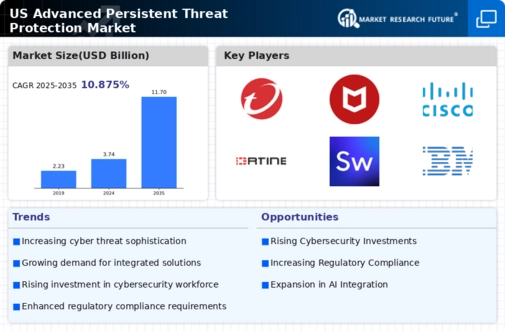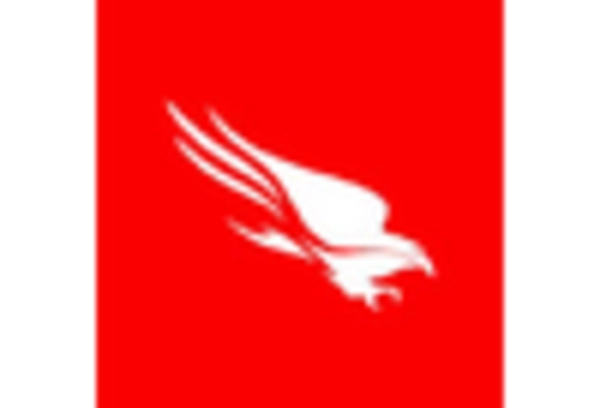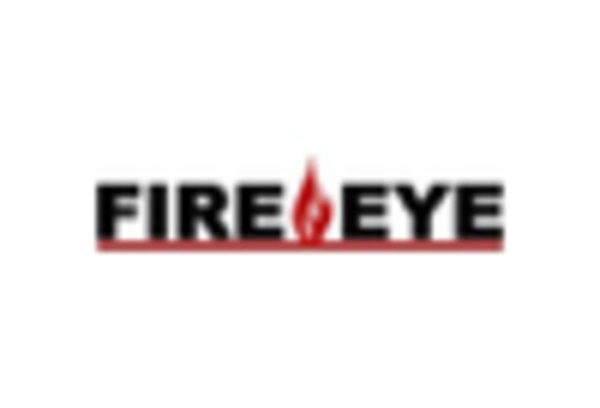The advanced persistent-threat-protection market is characterized by a dynamic competitive landscape, driven by the increasing sophistication of cyber threats and the growing demand for robust security solutions. Major players such as CrowdStrike (US), Palo Alto Networks (US), and FireEye (US) are at the forefront, each adopting distinct strategies to enhance their market positioning. CrowdStrike (US) emphasizes innovation through its cloud-native platform, focusing on AI-driven threat detection and response capabilities. Meanwhile, Palo Alto Networks (US) has been expanding its portfolio through strategic acquisitions, enhancing its offerings in cloud security and endpoint protection. FireEye (US), on the other hand, is concentrating on strengthening its incident response services, which are critical in addressing advanced threats, thereby shaping a competitive environment that prioritizes comprehensive security solutions.
In terms of business tactics, companies are increasingly localizing their operations to better serve regional markets and optimize supply chains. The market appears moderately fragmented, with a mix of established players and emerging startups. This fragmentation allows for diverse offerings, yet the collective influence of key players like Cisco (US) and Fortinet (US) is significant, as they leverage their extensive resources to drive innovation and market penetration.
In October 2025, CrowdStrike (US) announced a partnership with a leading cloud service provider to enhance its threat intelligence capabilities. This strategic move is likely to bolster its position in the market by integrating advanced analytics and machine learning into its existing platform, thereby improving its threat detection and response times. Such collaborations may also facilitate access to a broader customer base, reinforcing CrowdStrike's competitive edge.
In September 2025, Palo Alto Networks (US) completed the acquisition of a cybersecurity startup specializing in zero-trust architecture. This acquisition is strategically important as it aligns with the growing trend towards zero-trust security models, which are increasingly favored by organizations seeking to mitigate risks associated with remote work and cloud environments. By integrating this technology, Palo Alto Networks (US) is poised to enhance its security offerings and address evolving customer needs more effectively.
In August 2025, FireEye (US) launched a new suite of managed detection and response services aimed at small to medium-sized enterprises (SMEs). This initiative reflects a strategic pivot to cater to a segment that has historically been underserved in terms of advanced threat protection. By offering tailored solutions for SMEs, FireEye (US) not only expands its market reach but also positions itself as a leader in democratizing access to sophisticated cybersecurity solutions.
As of November 2025, the competitive trends in the advanced persistent-threat-protection market are increasingly defined by digitalization, AI integration, and a focus on sustainability. Strategic alliances are becoming more prevalent, as companies recognize the need to collaborate to enhance their technological capabilities and market reach. Looking ahead, competitive differentiation is likely to evolve, shifting from price-based competition to a focus on innovation, technology, and supply chain reliability. This transition suggests that companies that prioritize advanced technological solutions and strategic partnerships will be better positioned to thrive in an increasingly complex cybersecurity landscape.

















Leave a Comment